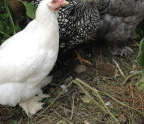FIELD DRESSING and SKINNING BIG GAME ANIMALS

The first factor to influence the flavor of an animal’s meat comes into play with the squeeze of a trigger or the release of an arrow. Was it a clean, fast kill that dropped the game in its tracks, or a poor shot that required several arrows or bullets to finish off the wounded and terrified beast? In the latter case, expect subtle but nonetheless detectably unpleasant flavors from the adrenaline that was pumping through the animal’s body those last few panicked minutes of life. And if a bullet or arrow penetrated organs other than heart, lungs, or brain, expect even worse. In short, if a hunter can’t be sure of making a humane, killing shot, then he or she has no right to waste an animal’s life for what may well turn out to be inedible, or at least inferior, meat.
But let’s assume you won’t take a shot unless you can be reasonably sure of killing cleanly. What else do you have to know?
Before you take to the woods, you’ll need to collect the accoutrements necessary for field dressing and transporting a large animal.
If you know that you’ll be able to haul your game out the same day it’s killed, you can get by with just a sharp knife, a small whetstone, a plastic bag for liver and heart (assuming you enjoy such cuts), a foot or so of heavy string, and a few yards of rope. (If you’re after elk, you’d best carry two knives — one small and sharp, the other large and sharp — plus a good sharpening stone.)
When hunting in a more remote area where
You’re reading a preview, subscribe to read more.
Start your free 30 days





